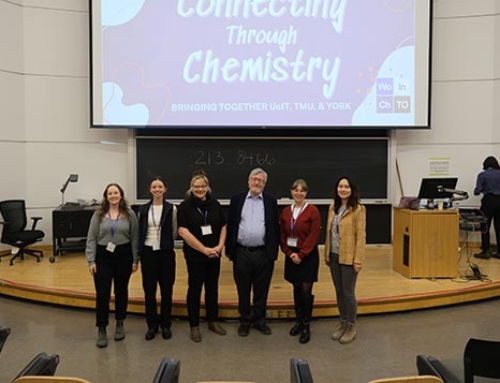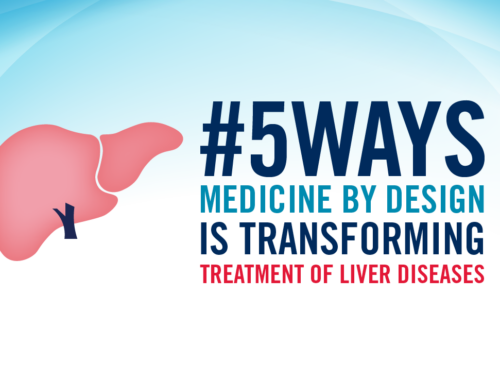
Medicine by Design is a strategic convergence hub that works to unlock the full potential of Toronto’s regenerative medicine ecosystem.
Medicine by Design’s founding in 2015 with a $114-million grant from the Canada First Research Excellence Fund (CFREF), was the start of a bold initiative to leverage Toronto’s unique strengths in regenerative medicine and propel Canada to the forefront of the field.
Since then, Medicine by Design has played a pivotal role in growing Toronto’s regenerative medicine ecosystem. The community has advanced a pipeline of innovative discoveries and technologies that include cell therapies to place insulin-producing cells back into the body of a person with type 1 diabetes or to regenerate heart muscles after a heart attack, and a gene therapy that reverses brain injury by re-engineering brain cells after a stroke.
Building on the successes of the past seven years, Medicine by Design is launching a new five-year strategic plan focused on fostering better health for Canadians, enabling a resilient bioeconomy and powering the next generation of forward-thinking bioinnovation leaders.
“Regenerative medicine has the potential to transform human health through offering advanced ways of treating, and perhaps even curing or preventing, disease,” says Michael Sefton, scientific director of Medicine by Design. “Our research community has made incredible progress on advances that could not just improve, but transform, human health.”
Sefton, who is also a University Professor at the Institute of Biomedical Engineering and the Department of Chemical Engineering & Applied Chemistry, University of Toronto (U of T), adds, “Because of the strength of our regenerative medicine community, Toronto is in a position to create an end-to-end innovation ecosystem that bridges people and perspectives from across sectors and disciplines. It’s an integrated approach, where research and discovery are happening at the same time as translation and biomanufacturing and clinical implementation.”
The strategic plan was shaped by individuals from across the Toronto Academic Health Sciences Network (TAHSN), which includes U of T and its affiliated hospitals. As well, many local, national and international key opinion leaders, advisors and partners in academia, government and the not-for-profit sector gave their input into the future directions of Medicine by Design.
These varying perspectives informed the following three new commitments in the strategic plan:
- Advance transformative research and early-stage translation in regenerative medicine.
- Enable the commercialization of accessible, living therapies at-scale.
- Prepare health systems, clinics, and communities to implement living therapy innovations.
“The process gave us a chance to reflect on our successes to date and also consider the future — how we can engage patients and communities as we undertake new commitments to translate and commercialize regenerative medicine for the economic and health benefit of all Canadians and the world,” says Sefton.
He adds that TAHSN is a global leader in regenerative medicine research excellence, and that Toronto has a long history of noted pioneers in stem cell biology, immunology, bioengineering, transplant surgery, oncology and health policy.
Allison Brown, executive director of Medicine by Design, says that listening to and incorporating the perspectives of both established and new community members was the key to building an effective plan.
“In our new strategic plan, the commitments we make reflect the perspectives of our community,” says Brown. “For the past seven years, we have sharpened the peaks of excellence and pushed the frontiers of regenerative medicine by investing in transformative, interdisciplinary research, recruiting world-class faculty and developing the talent required to advance these innovations toward patient and commercial impact. And now, we’re thinking about acceleration — getting cell and gene and other living therapies to the patients who need them as quickly as possible.”
The strategic plan heavily emphasizes the values Medicine by Design has embodied since its inception and takes the view that these values must inform the commitments and initiatives in the plan.
Brown says that Medicine by Design will continue to champion the values of research excellence, undertaking transformative research that addresses unmet clinical needs; convergence, which is the bringing together of research teams that have a diverse range of specialties including engineering, medicine, clinical practice and the physical and social sciences; and equity by prioritizing research that actively addresses the challenges of the scientific, clinical, social and/or economic barriers to developing and implementing complex living therapies across communities.
Brad Wouters, executive vice president, science and research, at the University Health Network (UHN), says that UHN hospitals are looking forward to continuing to be a vital part of the Medicine by Design community.
“UHN scientists and academic leaders were pleased to provide our perspectives as part of this strategic planning process,” says Wouters. “What Medicine by Design does really well is to expand our idea of what’s possible by bringing researchers, clinicians and engineers across disciplines and across institutions together. To strengthen Toronto’s position as a globally leading ecosystem for stem cells and regenerative medicine innovation, we must take a Team Toronto approach and build our successes to move toward clinical implementation at an accelerated pace.”
Medicine by Design is a multi-institutional strategic initiative that is part of a portfolio that resides in the division of the Vice President of Research and Innovation (VPRI) at the University of Toronto.
“We’re excited to see a bold vision for Medicine by Design in this new strategic plan,” says Leah Cowen, vice-president, research and innovation, and strategic initiatives. “Since Medicine by Design launched in 2015, it has built a reputation as a world-class hub for top regenerative medicine research and talent, and has been an inspiration for other strategic initiatives at the University. This new vision will build on CFREF’s investment into Medicine by Design and brings the Toronto community of researchers and clinicians together to advance regenerative medicine as a whole.”
Medicine by Design (2015-2022) by the numbers
- $75-million awarded for 170+ research projects
- Over $700 million in leveraged investments received by Medicine by Design investigators
- 17 new faculty recruited
- 42 new start-up companies created in Toronto’s regenerative medicine ecosystem with over $2 billion in venture financing into new companies
- 800+ new jobs created in the Toronto regenerative medicine sector
About Medicine by Design
Medicine by Design builds on decades of made-in-Canada excellence in regenerative medicine dating back to the discovery of stem cells in the early 1960s by Toronto researchers James Till and Dr. Ernest McCulloch. Medicine by Design is made possible thanks in part to a $114-million grant from the Canada First Research Excellence Fund.






